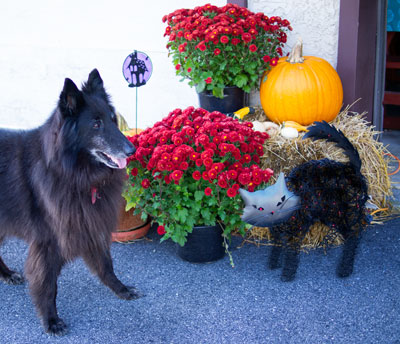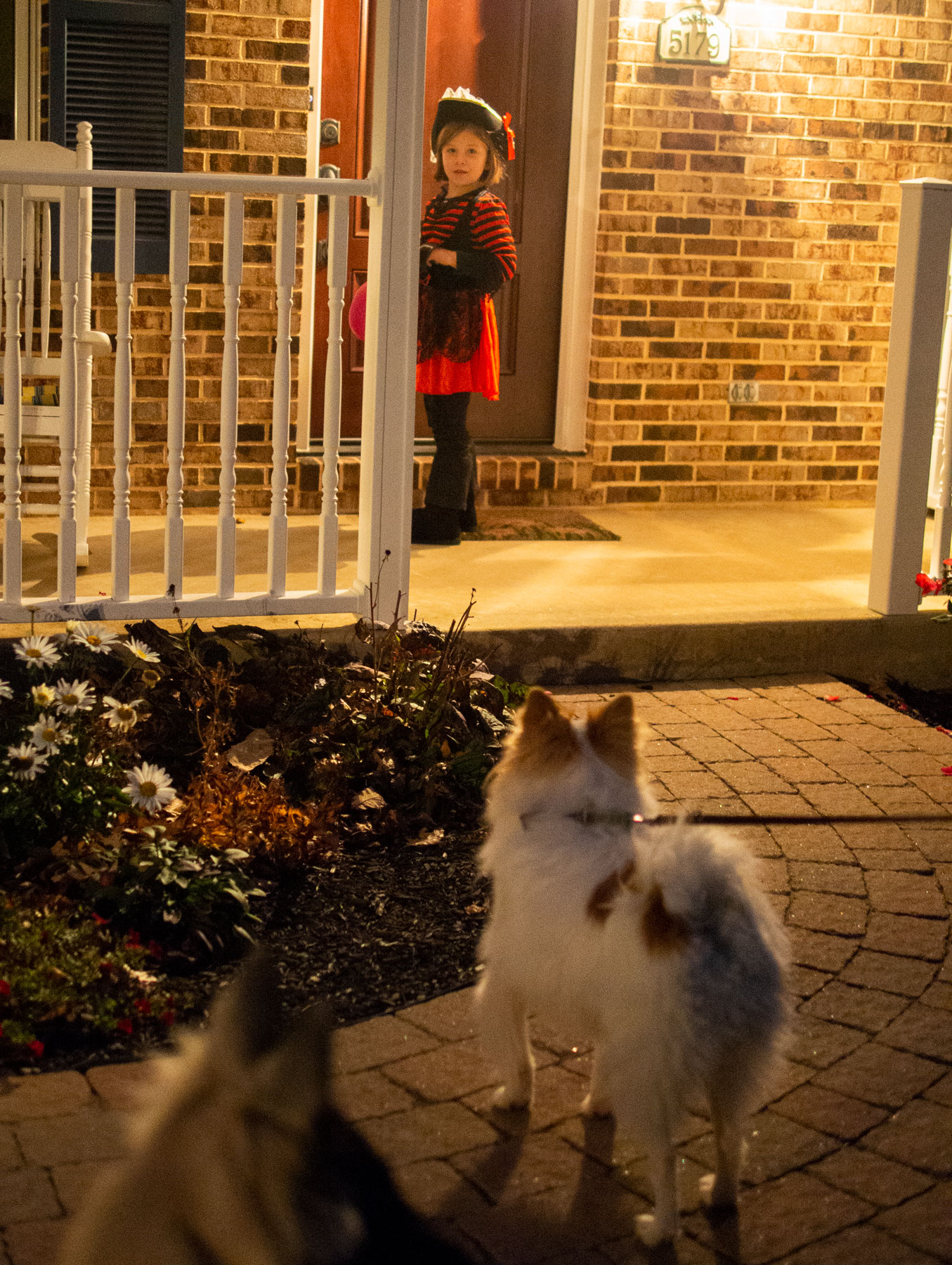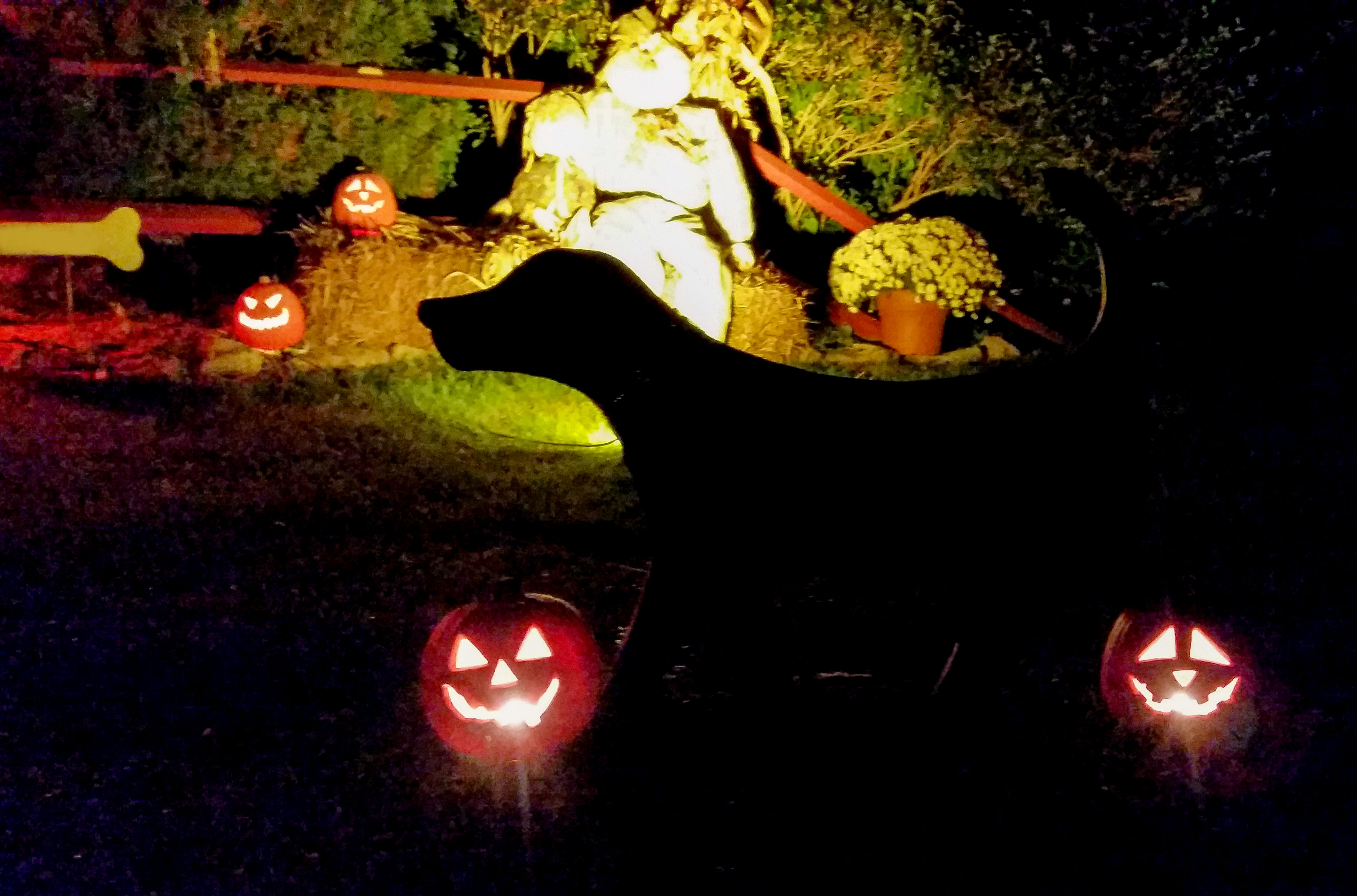Tis the season…the spooky season…the time when the decorations start to come out. And no sooner is Halloween over than the Christmas decorations come out (personally, one of my pet peeves…no one decorates for Thanksgiving!). It’s all in the spirit, right? Except for our poor dogs. Suddenly, walking in the neighborhood is a frightening thing.

There is a way to help your dog change his perception from feeling like he’s running the gauntlet to feeling like he’s playing a game of ‘I spy’! Here’s how to do it.
Before leaving the house, arm yourself with a pocket full of really super high value treats…cheese, hot dogs, chicken…whatever your dog would go crazy over. Don’t forget your clicker!
Watch your dog’s head and body movement. As soon…and I mean
AS SOON as your dog sees something and gets that posture that says he is worried about something, click and treat him.
 It could be a blow-up pumpkin, a witch or ghoul, or fluttery things hanging from a tree. Heck, it could even be a garbage can out of place from garbage night. You should be far enough away from the ‘scary thing’ that when you click, your dog will turn away from whatever he is looking at to get the treat. If not, try to move farther away from it, if possible.
It could be a blow-up pumpkin, a witch or ghoul, or fluttery things hanging from a tree. Heck, it could even be a garbage can out of place from garbage night. You should be far enough away from the ‘scary thing’ that when you click, your dog will turn away from whatever he is looking at to get the treat. If not, try to move farther away from it, if possible.
Changing the Emotional Response to “Scary” Things
This is a very powerful exercise which turns scary things into power points for your dog. It puts them in control. Soon, he will be looking around, and looking right back at you as if to say, “I found it! Click me!”. This is also sometimes called, “Clicking the Trigger”. You can use it, as well, for looking at people or dogs that might worry your dog.

While it’s not critical to understand what is going on, it is helpful to know why you are doing what you are doing. You are going to be using a combination of classical counterconditioning and operant conditioning. The classical counterconditioning comes into play by changing the underlying emotional response on the part of the dog toward a stimulus when being marked, or clicked, for looking at something that is currently worrisome. The clicker, or marker, tells the dog he did something that will be getting him a treat. The operant conditioning comes into play with the use of the clicker….telling your dog that he is doing something you want him to do, and following up with a reward (primary reinforcer), as well as praise (secondary reinforcer).

These are all terms that we introduce in our Foundations class, so they might sound familiar. This is also how we help our students who have behavioral challenges. It’s hard but very rewarding work, to see the dog start to think through the process and come to understand he has control in his world, and see the resulting increase in confidence.
Go try it…and have fun!
